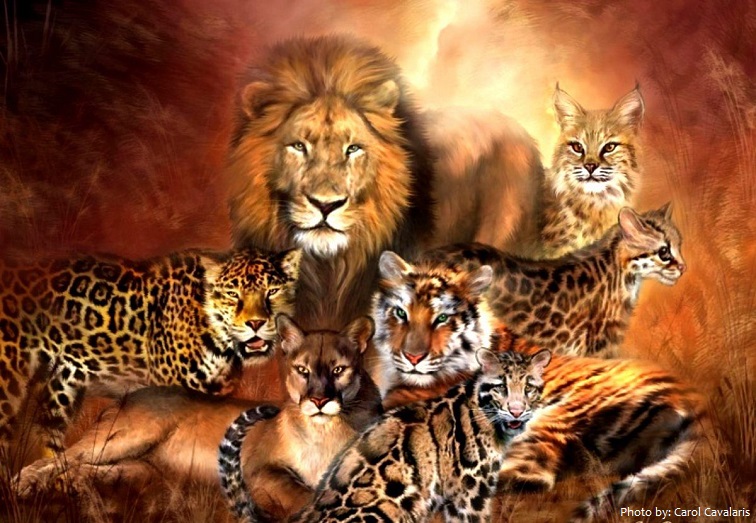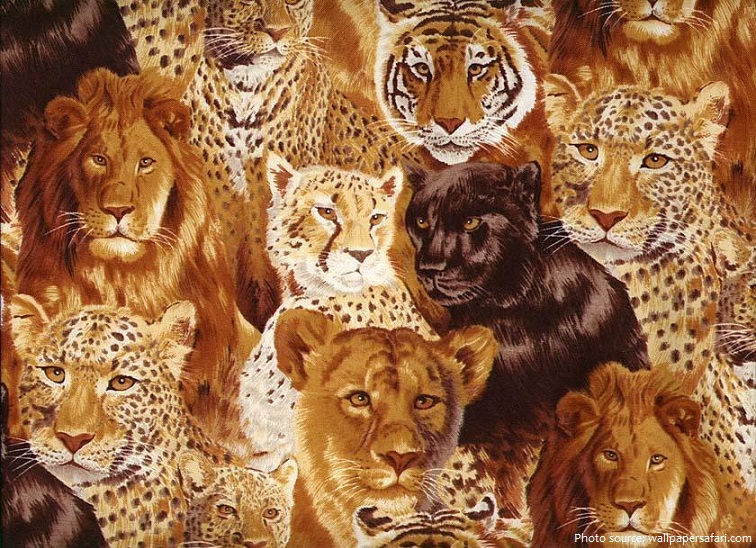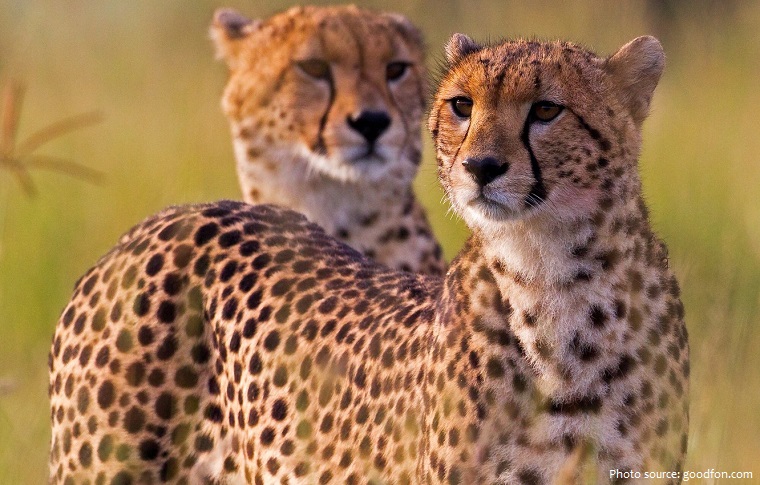
The term “big cat” is typically used to refer to any of the five living members of the genus Panthera, namely the lion, tiger, jaguar, leopard, and snow leopard, as well as the non-pantherine cheetah and cougar.
Except for the snow leopard, cheetah and cougar, these species are able to roar.
Despite enormous differences in size, various cat species are quite similar.
All cats are carnivores and some are efficient apex predators. Their native ranges include the Americas, Africa, and Asia – the leopard’s range also extends into European Russia.

Tigers are the largest members of big cats and are renowned for their power and strength. They can reach a length of up to 3.3 meters (11 feet) and weigh as much as 300 kilograms (660 pounds). Tigers may be big and heavy, but tigers are by no means slow movers. In fact, at full speed they can reach up to 65km/h (40 mph)!
Lions are the only big cats that live in groups, called prides. Although extremely large prides, consisting of up to 30 individuals, have been observed, the average pride consists of five or six females, their cubs of both sexes, and one or two males (known as a coalition if more than one) who mate with the adult females.
Cheetahs are not just the fastest cats… they’re the fastest animals on land!The latest research is revealing that it’s their extraordinary manoeuvrability that really gives them the killer edge. They can run
faster, brake harder and turn quicker than any other predator on land. They have been recorded running at speeds as fast as 96 kmph.

Leopards thrive in more environments than any other wild cat. From the deserts of southern Africa, to the boreal forests of Russia, even the bustling suburbs of Mumbai in India. In Africa their biggest rivals are lions who will often steal food from leopards rather than hunt for themselves.
The jaguar has the strongest bite force of any cat and the strongest bite of any mammal. With that bite force, jaguars will crunch down on bones and eat them. In fact, in the zoo, bones are part of a jaguars’ regular diet. It is the largest cat in the Americas and the third-largest in the world (after the lion and tiger).
The cougar is the most widespread of any large wild terrestrial mammal in the Western Hemisphere. It is an adaptable, generalist species, occurring in most American habitat types. Due to its wide range, it has many names, including mountain lion, puma, catamount, panther and painter. The cougar holds the Guinness record for the animal with the greatest number of names, with over 40 in English alone.

Snow leopards live in the Indian Himalayas, the world’s highest living cat. Known as the ‘ghost of the mountain’ they roam huge territories, where food is scarce, and finding a mate is even harder. They hunt the blue sheep that cling to rocky precipices. The snow leopards long tail helps them to balance when chasing their nimble prey, and when its cold they wrap it around their necks like a scarf.
The oldest big cat fossils ever found – from a previously unknown species “similar to a snow leopard” – were unearthed in the Himalayas in 2010. Using anatomical and DNA data, the fossils – named Panthera blytheae – have been dated between 4.1 and 5.95 million years old, which supports the theory that big cats evolved in central Asia – not Africa – and spread outward.

Around the world, big cats are among the most recognized and admired animals, at the top of the food chain.
Yet all seven species are listed as Threatened or Near Threatened on the IUCN Red List, with the tiger categorized as Endangered.
All species currently have populations that are decreasing. The principal threats to big cats vary by geographic location, but primarily consist of habitat destruction and poaching.
In Africa, many big cats are hunted by pastoralists or government ‘problem animal control’ officers. Certain protected areas exist that shelter large and exceptionally visible populations of African leopards, lions and cheetahs, such as Botswana’s Chobe, Kenya’s Masai Mara, and Tanzania’s Serengeti – outside these conservation areas, hunting poses the dominant threat to large carnivores.